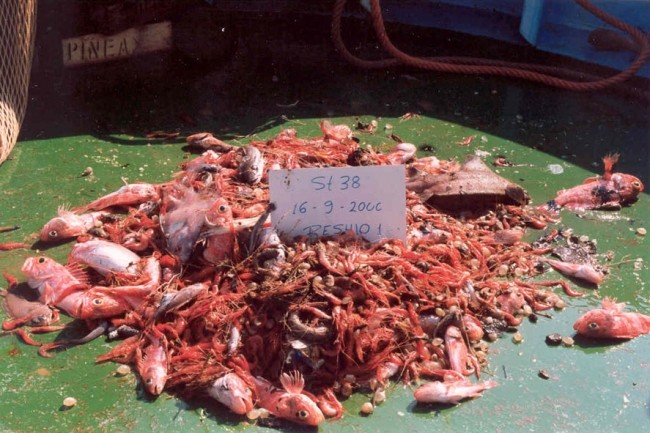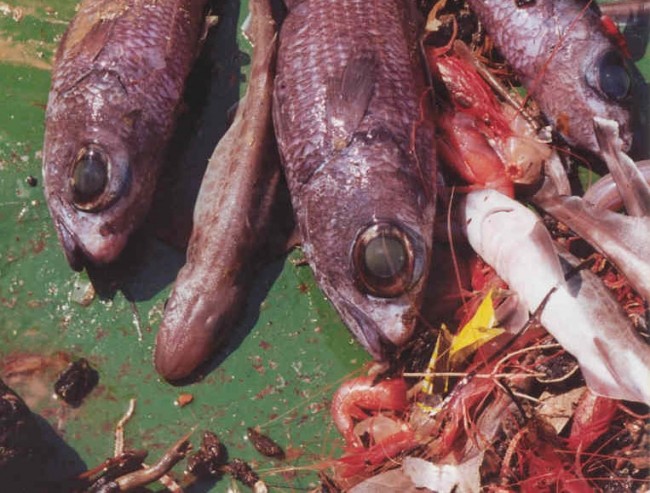Exploration of pristine red shrimp resources and comparison with exploited ones in the Ionian Sea – RESHIO.
The objectives of this project, (MYTILINEOU et al., 2003b), were (1) the investigation of the distribution and abundance of A. foliacea and A. antennatus in the South-Eastern side of the Ionian Sea (Greek waters) and the study of their biological characteristics (2) the identification of differences in abundance, population structure and biological characteristics for both species, between an exploited area (Italian Ionian) and an unexploited one (Greek Ionian) and (3) the determination of the composition and abundance of the by-catch species, particularly between the exploited and the unexploited area. Sampling was carried out off the coast of the south-eastern Greek Ionian Sea (83 stations) and in the Italian Ionian Sea (25 stations) from 2000 to 2001.
31 crustacean, 72 fish and 21 cephalopod species were identified in the Greek study area. Depth was found to play an important role in the deep-water community structure of both areas, distinguishing two main faunal assemblages; one in the depth stratum 300-500 and another in depths between 500-900 m (POLITOU et al., 2006).
The commercial (total, crustacean & fish) catch was highest in the 500-700 m depth zone. Discards (non-commercial species) constituted only 29% of the total catch. The highest catch of A. foliacea was found in this zone (14 Kg/h), whereas that of A. antennatus in the zone 700-900m (2 Kg/h) (MYTILINEOU et al., 2006a). The commercial catch and particularly that of the red shrimps was higher in the southern than the northern Greek Ionian Sea (MYTILINEOU et al., 2006b). Generally, abundance values were lower in the Italian than the Greek Ionian Sea and smaller sizes appeared in the stocks, indicating the impact of intensive fishing activities in the first area, resulted in overexploitation of some species (MYTILINEOU et al., 2003b).
The spatial distribution and abundance study of the red shrimps revealed a patchy distribution of these stocks (KAVADAS et al., 2002). Abundance was found to be statistically significant related in order of importance with temperature, latitude and depth for both shrimp species; it showed an increasing trend with temperature, decreasing with depth and it was lower from the northern to the southern Ionian Sea (MYTILINEOU et al., 2006b). Age, growth and mortality parameters of red shrimps were similar to those found for the red shrimps in the northern Ionian Sea (MYTILINEOU et al., 2003b).
Many colonies of the bamboo coral Isidella elongata and parts of the coral Desmophyllum crystagalli were identified in the study area (MYTILINEOU, unpublished data).
A greater mesh size and closure of trawling during recruitment period were recommended as measures protecting juvenile A. foliacea. The high vulnerability of this species should be taken into consideration in the case of development of a Greek deep-water fishery, particularly because this would be the main species in the commercial catch (MYTILINEOU et al., 2003b; 2006a).



